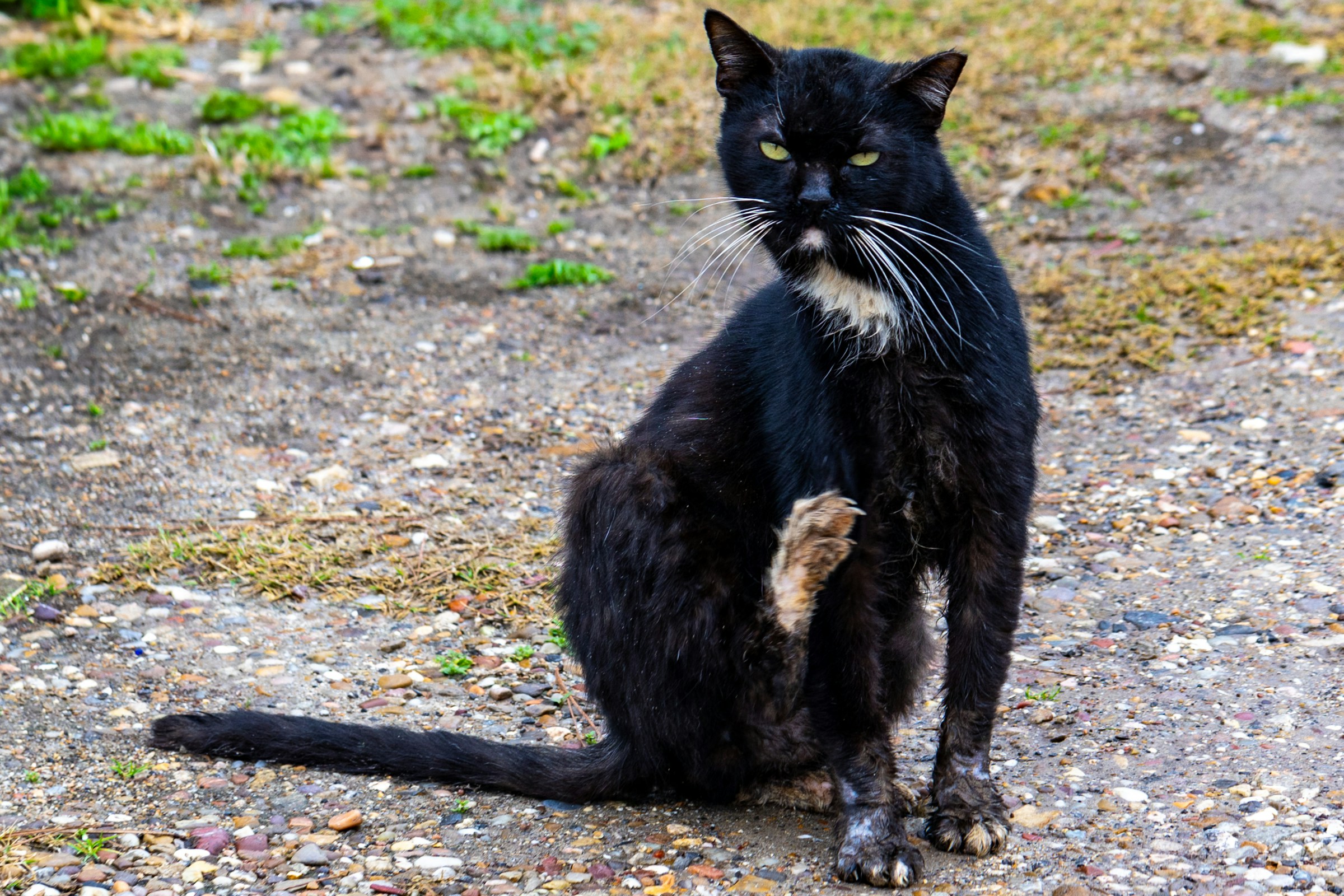I’m Jordan Lee, a certified groomer with half a decade of experience, here to guide you through helping your cat with dry skin. My household—home to a British shorthair and a Persian cat, hamster—is a daily lesson in pet care, and my British shorthair’s flaky skin once had me searching for solutions.
At my grooming salon, I often advise clients on keeping their cats’ coats healthy. Addressing dry skin is as vital as proper feeding, as discussed in an article on how much should I feed my cat?. This guide covers causes, symptoms, and practical steps to soothe your cat’s dry skin, based on my hands-on experience. I’ll link to newer articles like how to bathe a cat and trusted sources. Let’s get your cat’s coat glowing!
What causes dry skin in cats?
Dry skin in cats stems from various factors. Here’s what I’ve seen:
- Environment. Low humidity, especially in winter, dries skin. My British shorthair’s coat dulled during a cold snap.
- Poor grooming. Matted fur traps flakes. My Persian cat’s long coat needs regular brushing.
- Diet. Lack of omega fatty acids affects skin. My client’s cat improved with better food.
- Allergies. Food or environmental triggers irritation. My spaniel’s allergies inspired vigilance.
- Parasites. Fleas or mites worsen dryness. My guide on symptoms and treatment of ear mites in dogs notes similar issues.
Unlike dog skin concerns, covered in an article on how to spot and prevent common skin issues in dogs, cat skin requires tailored care.
Symptoms of dry skin in cats
Spotting dry skin early helps your cat. Look for:
- Scratching. Excessive itching or grooming. My British short-hair scratched her neck raw.
- Flakes. White dandruff in fur. I noticed flakes on my Persian cat’s back.
- Redness. Irritated patches. My client’s cat had pink spots.
- Dull coat. Lackluster fur. My British shorthair’s shine faded.
- Hair loss. Thinning fur from scratching. My Persian cat had a small bald spot.
The ASPCA offers insights on common cat diseases, including dry skin signs.
How to help your cat’s dry skin
Here’s my step-by-step approach to soothe dry skin:
Brush regularly
Brush daily to distribute natural oils. I use a soft brush on my British short-hair to reduce flakes. For long-haired cats like my Persian, a comb prevents matting. Brushing complements bathing, as in my guide on how to bathe a cat.
Adjust bathing
Use cat-safe, moisturizing shampoos during baths. I switched to a hydrating shampoo for my British short-hair. Avoid over-bathing, which dries skin. An article on how to read cat food labels helps choose safe shampoo ingredients.
Improve diet
Feed foods rich in omega-3s. I added fish-based kibble for my Persian cat, per vet advice. Hydration matters too—my cats drink more with a fountain. For nutrition tips, see an article on best dog foods for your senior dogs.
Add supplements
Omega fatty acid supplements help. My British shorthair’s coat improved with vet-approved fish oil. Always consult a vet before starting supplements. An article on can dogs eat beans? discusses dietary additions.
Control environment
Use a humidifier in dry seasons. I run one near my cats’ beds to ease their skin. Keep bedding clean to avoid irritants, like I do for my hamster. For home tips, see an article on how to create a pet-friendly home environment.
Check for parasites
Inspect for fleas or mites. I comb my Persian cat weekly for pests. Vet-recommended treatments clear infestations. My guide on symptoms and treatment of ear mites in dogs covers parasite management.
Special considerations
- Senior cats. My client’s older cat needed gentler shampoos, as mentioned in an article on common senior dog health problems.
- Long-haired cats. My Persian cat requires extra brushing to prevent flakes.
- Allergic cats. My British shorthair’s allergies needed vet testing.
- Multi-pet homes. My golden retriever’s fleas once spread, so I treated all pets. See my guide on how to introduce a new pet to your home.
When to see a vet
If dry skin persists, or you notice redness, sores, or lethargy, contact a vet. My British shorthair’s scratching required a vet visit. For remote options, see an article on telemedicine in veterinary care. Untreated issues can worsen, as with my spaniel’s skin woes.
The American Veterinary Medical Association (AVMA) provides guidance on pet skin health, emphasizing vet care.
As a groomer, I’ve watched my British shorthair’s flaky coat transform into a sleek shine with simple steps, and my Persian cat now enjoys her brushing sessions. Stay proactive with your cat’s skin care to keep them comfortable. Check out more tips in articles like How much should I feed my cat? or my guide on how to bathe a cat. If symptoms linger, your vet is your best ally. Here’s to soft, healthy feline coats!

I’m a certified pet groomer with five years of experience, passionate about helping pet owners keep their furry friends happy and healthy. I run a bustling grooming salon where I work with dogs, cats, and even the occasional small pet, offering practical advice based on hands-on expertise. My home is a lively pet haven, shared with a golden retriever, a spaniel, a British short-hair, a Persian cat, a hamster, and an African Grey parrot—each teaching me something new about pet care daily.
